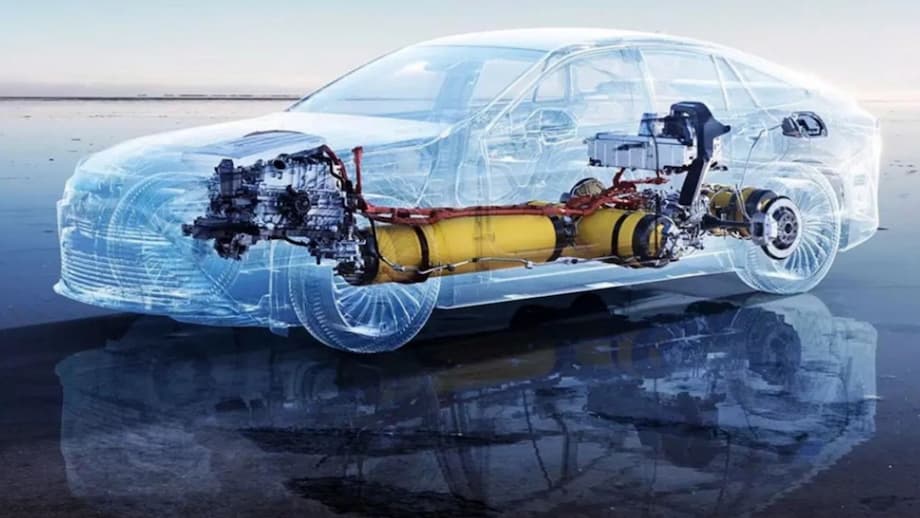Why a 90 C hydrogen battery matters now
Researchers in Japan have unveiled a hydrogen battery that stores and releases hydrogen at about 90 C, or 194 F. That operating point is far lower than the 300 to 400 C typically needed by solid hydrogen storage systems based on magnesium hydride. The result addresses the toughest part of a hydrogen energy system, reliable and safe storage that is efficient and reversible. The team at the Institute of Science Tokyo, led by Dr. Takashi Hirose with Assistant Professor Naoki Matsui and Institute Professor Ryoji Kanno at the Research Center for All Solid State Battery in Science Tokyo, reports the advance in the journal Science dated September 18, 2025.
- Why a 90 C hydrogen battery matters now
- What the researchers built
- Why hydrogen storage is hard
- Inside the new solid electrolyte
- Performance and what the numbers mean
- Potential uses from vehicles to grid storage
- Engineering and scale up challenges
- How it compares with other storage options
- What to watch in the next phase
- Key Points
Hydrogen can move energy between times and places without emitting carbon dioxide at the point of use. Storing it has been a stubborn pain point. Tanks that hold compressed gas are heavy and expensive, and liquid hydrogen requires cryogenic temperatures near minus 253 C. A practical solid storage system that operates near the boiling point of water would change design choices for vehicles, industrial plants, and renewable energy storage. The new cell uses magnesium hydride as the storage medium and a special solid electrolyte that conducts hydride ions, which enables full capacity cycling at a temperature that real equipment can manage.
What the researchers built
The device is an electrochemical cell that treats hydrogen as an active charge carrier. Magnesium hydride, written as MgH2, serves as the anode where hydrogen is stored. Hydrogen gas is the cathode. Between them sits a newly engineered solid electrolyte that conducts hydride ions with high speed even at room temperature. The electrolyte composition, Ba0.5Ca0.35Na0.15H1.85, has an anti alpha AgI type crystal structure known for superionic behavior, which gives hydride ions a freeway to move through the solid.
How the cell charges and discharges
During charging, the anode releases hydride ions from MgH2. Those ions migrate through the solid electrolyte toward the hydrogen electrode, where they are oxidized to form hydrogen gas. During discharge, hydrogen gas at the cathode is reduced to hydride ions. These ions travel back through the electrolyte to the anode side, where they react with magnesium to re form MgH2. The process is fully reversible, so the same material can store hydrogen and release it again and again at about 90 C without resorting to extreme heat.
In electrochemical terms, the cell swaps the usual electron only picture for one in which hydrogen participates directly. The voltage and current you apply during charging and discharging drive the movement of hydride ions. That control replaces the brute force heat input required by many thermal storage schemes, which cuts energy losses and simplifies system design.
Why hydrogen storage is hard
Compressed hydrogen tanks operate at pressures that often reach 350 to 700 bar. The compression work reduces net efficiency, and the tanks add weight and cost for any mobile use. Liquid hydrogen avoids big tanks but brings its own hurdles. Hydrogen must be cooled below 21 K to liquefy, which needs energy hungry cryogenic equipment. Boil off losses are a persistent challenge, especially in warm environments and during slow usage.
Solid materials offer another route. They can hold hydrogen in a compact form at low pressure. Many of the most studied hydrides release hydrogen only when heated to very high temperatures. The heat input makes systems complex and cuts round trip efficiency. Electrochemical approaches at lower temperatures using liquid electrolytes have struggled because hydride ions do not move well in liquids designed for lithium or sodium batteries, so capacities have been far below what the solids can store on paper. The Japanese team solves the transport bottleneck by shifting to a solid that was built to move hydride ions quickly.
Inside the new solid electrolyte
The electrolyte is a hydride ion conductor with an anti alpha AgI type framework. In this structure, barium, calcium, and sodium occupy positions that create a network of sites and channels. Hydride ions can hop between tetrahedral and octahedral sites with little resistance, which produces high ionic conductivity even at room temperature. That fast motion is what makes a 90 C operating point achievable for a magnesium hydride cell.
Beyond speed, the material shows electrochemical stability. A solid electrolyte prevents the mixing problems and side reactions that can plague liquid systems. The solid separator isolates the hydrogen electrode from the magnesium hydride while still letting hydride ions pass. That arrangement supports repeatable cycling and reduces safety risks tied to leakage or volatility. The composition can be tuned by adjusting the barium, calcium, and sodium ratio, offering a research path to improve conductivity, stability, and manufacturability.
Performance and what the numbers mean
The prototype achieved the full theoretical storage capacity of magnesium hydride, about 2,030 milliamp hours per gram, which corresponds to 7.6 percent hydrogen by weight. That figure is a high bar for a practical hydrogen storage medium. Hitting it with a cell that operates near 90 C marks a step change because it combines high capacity with a foreseeable engineering envelope.
The key is that the electrolyte supports fast hydride ion movement at room temperature. The cell then requires only moderate heating to keep magnesium hydride kinetics moving without wasting energy. Temperatures below 100 C simplify heaters, insulation, seals, and safety measures compared with systems that need several hundred degrees Celsius. Lower operating heat also makes thermal integration easier. Waste heat from a fuel cell stack or engine can help keep the storage cell in its working range.
Reversibility matters for real use. The team reports repeated storage and release at full capacity at low temperature, which was not achieved by earlier thermal or liquid electrolyte methods. That combination of high energy density, lower temperature, and repeatable cycling is what moves the idea from lab curiosity toward a platform that developers can integrate into vehicles or stationary storage equipment.
Potential uses from vehicles to grid storage
On the road, hydrogen fuel cell vehicles need compact storage that is safe, light, and efficient. A solid storage system that operates near the boiling point of water can replace some of the burden of high pressure tanks. A hydrogen battery module could charge at a station by absorbing hydrogen produced on site and later release gas on demand to feed a fuel cell stack. The reversible solid design reduces the need for complex cryogenic or very high pressure systems, which can lower cost and improve packaging options for cars, trucks, and buses.
For the power sector, a hydrogen battery pairs naturally with intermittent sources. Solar or wind power can drive an electrolyzer to make hydrogen when electricity is abundant. The hydrogen battery can absorb and hold the gas at low pressure and later release it to a fuel cell or turbine during peak demand or low renewable output. The approach fits microgrids, islanded systems, and remote facilities where bulky tank farms are impractical.
Industrial users look for dependable and flexible hydrogen supply. Steelmaking, ammonia production, and refinery operations need smooth flows to keep processes stable. A modular solid storage bank provides a buffer that can absorb short term fluctuations in supply and output. The lower temperature operation and solid construction can simplify siting inside plants and reduce permitting friction compared with cryogenic storage.
Engineering and scale up challenges
Keeping a cell near 90 C is easier than running at 300 C, yet it still calls for thermal management. Designers must add heaters, insulation, and control logic to hold temperature in cold climates and to prevent overheating in hot conditions. Thermal transients during fast charge and discharge need careful handling so that materials do not crack or degrade.
Materials and manufacturing will matter. The electrolyte is a multicomponent hydride that is sensitive to oxygen and moisture. Producing powders with the right stoichiometry, particle size, and purity, then shaping dense, defect free separators will require controlled environments and quality control. Magnesium hydride is reactive with water and oxygen, so pack designs must seal out air and moisture. Mechanical durability under volume changes during cycling is another test, since hydrides expand and contract. Developers will work on coatings, binders, and stack pressure control to keep resistance low and life long.
System integration brings standard hydrogen safety questions. Gas management hardware has to prevent leaks and vent safely. Sensors, valves, and regulators must work with the solid storage stack so that the overall system meets codes and standards. Size, weight, and cost will set the path to use in vehicles. For stationary applications, the balance of plant, from electrolyzers to fuel cells to power electronics, must be sized for round trip efficiency that beats alternatives. Pilot projects at increasing scales will be essential to reveal long term performance and maintenance needs.
How it compares with other storage options
Compressed gas systems are simple but carry energy penalties for compression and need robust, heavy tanks. Liquid hydrogen packs energy densely but demands cryogenic equipment and careful handling to avoid boil off losses. The hydrogen battery shifts the tradeoff. It uses moderate heat and electricity to move hydride ions and store hydrogen in a solid with high capacity. The lack of cryogenic hardware and very high pressure vessels can simplify safety cases and cut auxiliary loads.
Other solid storage materials, such as complex hydrides like alanates or borohydrides, often require catalysts and still run at high temperatures with sluggish kinetics. Magnesium hydride is light and abundant. Pairing it with a fast hydride ion conductor changes the rate limiting step. The electrolyte handles ion transport while the moderate heat addresses the chemistry of hydrogen release and uptake. That division of labor is what unlocks full capacity at an accessible temperature.
What to watch in the next phase
Independent replication and scaling beyond small lab cells will be the next milestones. Larger format cells and stacks need to show the same capacity and reversibility, along with stable operation across hundreds or thousands of cycles. Rate capability during fast charge and discharge, response to start stop use, and safety under abuse conditions will be closely watched by industry.
Commercial paths often depend on partnerships. Automakers, energy developers, and industrial gas suppliers will look at cost per kilogram of stored hydrogen, system energy efficiency across charge and discharge, and maintenance needs. If manufacturing methods for the electrolyte and pack hardware are standardized and cycle life proves strong, the technology could move into pilot deployments that pair electrolyzers, hydrogen battery modules, and fuel cells in real settings.
Key Points
- Japanese researchers report a hydrogen battery that operates at about 90 C, far lower than earlier magnesium hydride systems that needed 300 to 400 C.
- The cell uses magnesium hydride as the anode, hydrogen gas as the cathode, and a solid electrolyte that conducts hydride ions quickly.
- The electrolyte, Ba0.5Ca0.35Na0.15H1.85, has an anti alpha AgI type structure that enables high ionic conductivity at room temperature.
- Testing reached the full theoretical capacity of magnesium hydride, about 2,030 mAh per gram, equal to 7.6 percent hydrogen by weight.
- Operation below 100 C reduces energy losses and simplifies thermal management, seals, and safety measures compared with high heat systems.
- The reversible cycle stores and releases hydrogen repeatedly without the extreme heat demanded by conventional thermal methods.
- Potential uses include vehicle storage modules, grid scale energy storage paired with electrolyzers, and industrial buffering.
- Key challenges include thermal management, air and moisture protection, cycle life, manufacturability, and system integration.
- The work was led by Dr. Takashi Hirose with Assistant Professor Naoki Matsui and Institute Professor Ryoji Kanno at the Institute of Science Tokyo.
- The findings were published in Science on September 18, 2025, and will now face replication and scale up tests.




